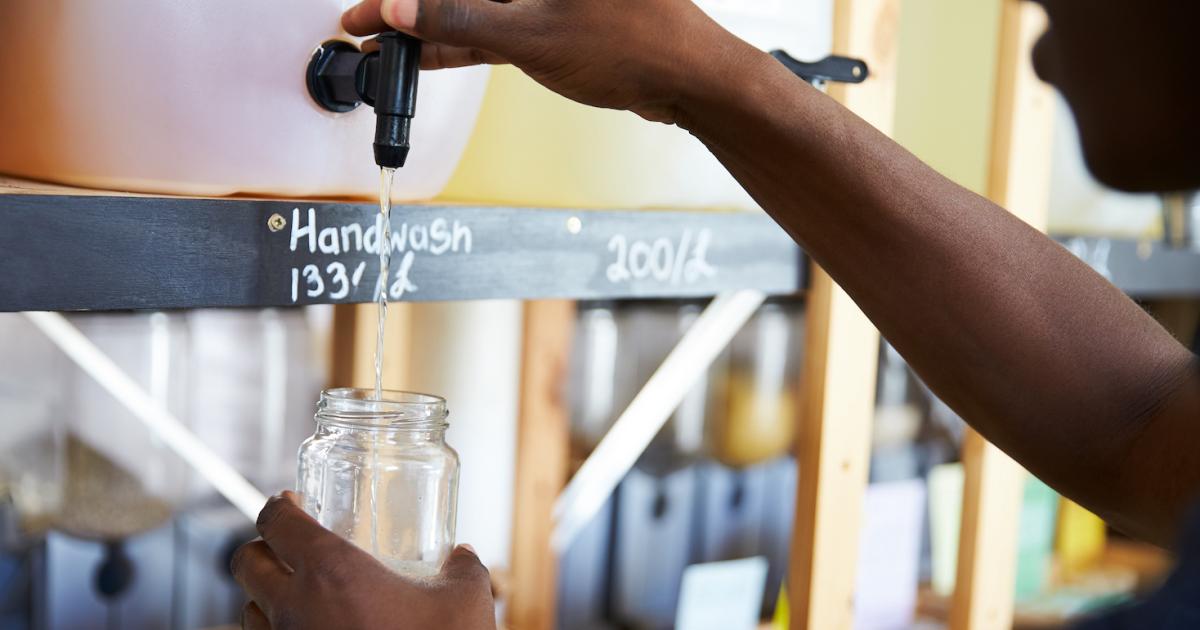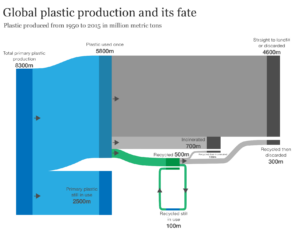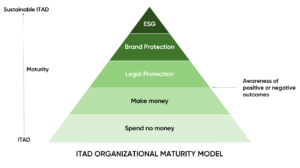
What will it take to achieve the unparalleled potential of reuse?
To answer that question, I reached out to 15 of my favorite reuse leaders, innovators and entrepreneurs across the four consumer-facing models of reuse.
Together, they see potential for a thriving reuse-enabled future. In this vision, single-use is the exception and reuse the norm: it is convenient, affordable and accessible to all; optimized and efficient. Pollution is reduced, jobs are created, revenue earned and communities rebuilt.
If these innovators could wave a magic wand to make this vision a reality, here are five things they’d wish for:
1. Policy and legislation
At the global, federal, state and local level the experts called for a range of legislative solutions, from shifts in investment strategy and subsidies to extended producer responsibility (EPR) and binding reuse quotas. (Incidentally, the recently released “zero draft” of the U.N. Treaty to End Global Plastic Pollution includes both EPR and reuse targets.)
“Policy incentivizing reuse or de-incentivizing single-use packaging will drive the new reuse economy forward faster than anything,” said Lauren Sweeney, co-founder and CEO of the reusable takeout startup DeliverZero.
José Manuel Moller, CEO of the refill-enabling platform Alagramo, noted, “Regulation would give the final push for corporations to take the lead.” And it will be the “determining factor in moving the U.S. reuse strategy forward,” said Anton van Zyl, director of sustainable packaging strategy at Coca‑Cola North America.
2. Robust infrastructure
The innovators also agreed that comprehensive infrastructure would enable convenience and efficiency.
“We need infrastructure that supports reuse — washing, sorting, storage and shipping — so that the mechanics of packaging reuse [aren’t] a barrier to entry,” said Lindsey McCoy, CEO of Plaine Products, which delivers bath and body products in refillable containers.
Caroline Vanderlip, founder and CEO of reusable dishware company Re:Dish, agreed: “Infrastructure, like washing services, [could] open doors for more institutions to offer circular solutions, and convenient collection and distribution points [could] allow users to easily participate.”
“The biggest opportunity here is to simplify infrastructure by working with local businesses and communities… to establish a network of return drop-off points in public spaces, retail locations and transportation hubs,” added Rebecca Smith, director of growth strategy at the reusable mailer service LimeLoop.
3. Parity with single-use
Another common refrain was that reuse must be as convenient, accessible and cost effective as single-use. For that to happen, many called for an end to fossil fuel subsidies, which enable cheap, abundant plastics.
We need a world where “returnable items are as approachable for brands as single-use,” shared Lindsey Hoell, CEO and founder of food delivery platform Dispatch Goods. One where “there’s a level playing field,” noted McCoy of Plaine Products. And one where the “true cost and impact of single-use — on both people and planet — is accounted for,” concluded Mike Martin, CEO and founder of reusable cup company r.cup. “Where subsidies that artificially lower the cost of single-use are eliminated and the cost of disposal is factored in.”
“If I could, [I’d] make reusables more accessible and make single-use plastic less so,” said Sarah Paiji Yoo, co-founder and CEO of Blueland, which specializes in refillable cleaning products. “Plastic is currently viewed and treated as disposable but it should be viewed as the long-lasting, durable material that it actually is.”
4. A shift in consumer awareness
In lieu of shifting consumer behavior, I heard a stronger call for something that may be more attainable: a shift in perception.
“A broader cultural understanding of the climate impacts of single-use packaging would drive faster adoption of reuse, both by businesses and by consumers,” noted Sweeney of DeliverZero.
As Martin of r.cup put it: “We have trained the world to waste. We need to create a cultural shift that lays bare that single-use is destroying the planet and every person can easily make an impact. Once this is realized, the economics, adoption, infrastructure and consumer participation of reuse will accelerate.”
Some even argued that consumer perception was the most critical need of all: “Awareness and acceptance of reuse opportunities across a consumer’s lifestyle will be the most impactful driver of progress,” said van Zyl of Coca‑Cola. “When the consumer continues to ask for and put purchasing power behind reuse, all the [other] factors will follow.”
5. A priority for brands
Last but not least, the reuse movement needs corporate champions.
“It simply needs to become a commercial priority for brands and retailers,” said Tom Szaky, founder and CEO of Terracycle and reuse platform Loop. “We need to stop having pilots, future commitments and multi-stakeholder dialogues. We need to decide to scale, make it a commercial priority and then build it.”
Unfortunately, there has been hesitancy among the biggest players. “[Reuse’s] biggest barrier is willingness from the large CPG players to diversify their channels and empower the reuse model,” said Petros Palandijan, CEO and founder of refill machine operator Good Filling. “This only works if customers can reuse name-brand products.”
So what’s their call to action? It’s time to “proactively incorporate strategic reuse programs into 2024 business plans,” said Quarrell of Bold Reuse.
As my many innovators laid out above, there’s a lot to do.
Most essentially, companies — ike your own — must create a reuse strategy and begin building.
To some, it may seem overwhelming, but Sweeney of DeliverZero may have put it best: “Doing things differently is urgently necessary — but that doesn’t need to be a bad thing. In fact, there is a lot of joy in creating and participating in solutions.”
- SEO Powered Content & PR Distribution. Get Amplified Today.
- PlatoData.Network Vertical Generative Ai. Empower Yourself. Access Here.
- PlatoAiStream. Web3 Intelligence. Knowledge Amplified. Access Here.
- PlatoESG. Automotive / EVs, Carbon, CleanTech, Energy, Environment, Solar, Waste Management. Access Here.
- PlatoHealth. Biotech and Clinical Trials Intelligence. Access Here.
- ChartPrime. Elevate your Trading Game with ChartPrime. Access Here.
- BlockOffsets. Modernizing Environmental Offset Ownership. Access Here.
- Source: https://www.greenbiz.com/article/5-ways-make-reuse-mainstream
- :has
- :is
- :not
- :where
- 15%
- 2024
- 7
- 8
- a
- About
- above
- abundant
- accelerate
- acceptance
- accessible
- accounted
- Achieve
- across
- Action
- actually
- added
- address
- Adoption
- affordable
- All
- allow
- also
- among
- an
- and
- answer
- anything
- ARE
- argued
- article
- AS
- ask
- At
- Attainable
- awareness
- Bad
- barrier
- BE
- become
- been
- begin
- behind
- BEST
- Biggest
- binding
- body
- both
- brands
- broader
- build
- Building
- business
- business plans
- businesses
- but
- by
- call
- call to action
- called
- CAN
- ceo
- CEO and Founder
- Champions
- channels
- cheap
- circular economy
- Cleaning
- Climate
- climate crisis
- Co-founder
- collection
- commercial
- commitments
- Common
- Communities
- Companies
- comprehensive
- concluded
- Connect
- consumer
- consumer behavior
- Consumers
- Containers
- continue
- continues
- convenience
- Convenient
- Corporate
- Corporations
- Cost
- could
- cpg
- create
- created
- Creating
- crisis
- critical
- cultural
- Cup
- Currently
- Customers
- decide
- delivers
- delivery
- determining
- dialogue
- Director
- distribution
- diversify
- do
- doesn
- doing
- doors
- draft
- drive
- driver
- earned
- easily
- Economics
- economy
- Effective
- efficiency
- efficient
- eliminated
- empower
- enable
- end
- entrepreneurs
- entry
- essentially
- establish
- Ether (ETH)
- Even
- Every
- exception
- experts
- fact
- factor
- factored
- factors
- faster
- Favorite
- Federal
- field
- final
- five
- follow
- food
- food delivery
- For
- Forward
- fossil
- Fossil fuel
- founder
- Founder and CEO
- Free
- from
- Fuel
- future
- Give
- Global
- Growth
- happen
- Have
- having
- heard
- here
- hesitancy
- http
- HTTPS
- Hubs
- i
- if
- Impact
- impactful
- Impacts
- in
- incentivizing
- includes
- incorporate
- Infrastructure
- innovators
- institutions
- interested
- into
- investment
- Investment strategy
- IT
- items
- Jobs
- jpg
- large
- lauren
- Lays
- lead
- leaders
- LEARN
- learning
- least
- Legislative
- less
- Level
- lifestyle
- like
- local
- local businesses
- locations
- Lot
- lower
- machine
- magic
- Mainstream
- make
- many
- Martin
- material
- May..
- mechanics
- mike
- model
- models
- more
- most
- movement
- moving
- must
- my
- necessary
- Need
- needs
- network
- New
- Newsletter
- node
- North
- noted
- Oct
- of
- offer
- on
- once
- ONE
- only
- open
- opportunities
- Opportunity
- optimized
- or
- Other
- our
- out
- overwhelming
- own
- packaging
- parity
- participate
- participating
- participation
- People
- perception
- person
- Pilots
- Place
- planet
- plans
- plastic
- plastics
- platform
- plato
- Plato Data Intelligence
- PlatoData
- players
- playing
- points
- policy
- Pollution
- potential
- power
- priority
- producer
- Products
- Programs
- Progress
- public
- purchasing
- Push
- put
- question
- range
- reached
- Reality
- realized
- recently
- Reduced
- Regulation
- released
- responsibility
- retail
- retailers
- return
- reusable
- reuse
- revenue
- robust
- s
- Said
- San
- San Jose
- Scale
- see
- seem
- Services
- shared
- shift
- SHIFTING
- Shifts
- Shipping
- should
- simplify
- simply
- So
- Solutions
- some
- something
- spaces
- specializes
- startup
- State
- Stop
- storage
- Strategic
- Strategy
- stronger
- Supports
- sustainable
- Sweeney
- T
- Take
- taking
- than
- that
- The
- the world
- their
- then
- There.
- These
- they
- thing
- things
- this
- thousands
- thriving
- time
- to
- together
- tom
- trained
- transportation
- treated
- true
- True Cost
- u.s.
- understanding
- users
- viewed
- vision
- wand
- want
- was
- washing
- Waste
- Wave
- ways
- we
- weekly
- when
- which
- will
- Willingness
- with
- working
- works
- world
- would
- would give
- Your
- zephyrnet





